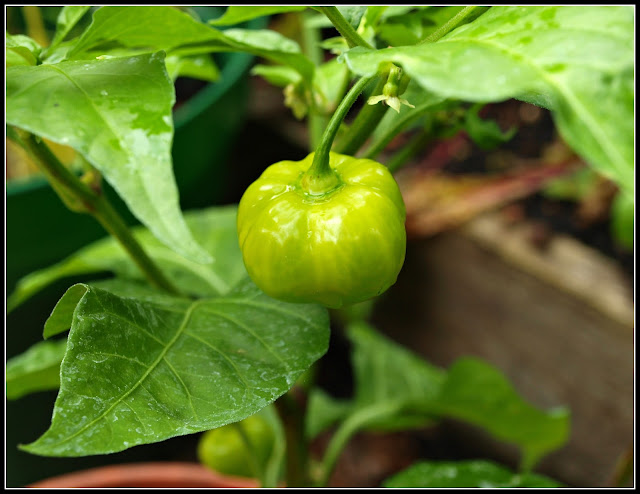I reckon that if I keep this plant indoors when the weather turns cold I should be able to persuade its fruit to ripen. The plant itself is not very big (maybe 15" tall) and will easily fit on a windowsill.
Meanwhile, my other chillis are producing lots of ripe fruit now. I had a clear-out of the freezer today and replaced last year's remaining chillis with some from this year. Rather than just throw them away, I used the old ones to make another batch of chilli oil.
Here are the ones I have just harvested, posing...
These green chillis were harvested last week, and they are now in the freezer. We like to have some red ones and some green ones, to give greater flexibility in the kitchen.
Half hidden behind the chillis, in amongst the Runner Beans I have a "volunteer" tomato plant growing. I thought it was going to succumb to the blight like everything else, so didn't pay it much attention, but it is surviving and has now produced lots of very tiny fruits. They are still green, but I wouldn't be surprised if they go yellow when they ripen, since the only tomato type with such small fruit that I have ever grown was "Currant Goldrush", which has golden yellow fruits. I suspect that this is a plant that has grown from seeds preserved in my compost bin.
Talking of tomatoes, what do you think of this "nosey" one?






















































